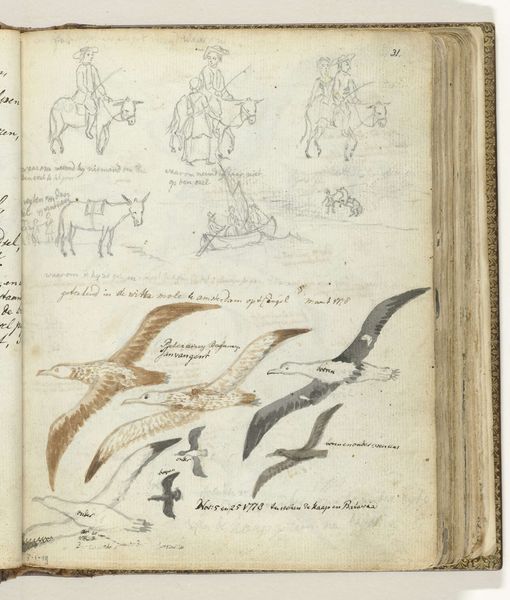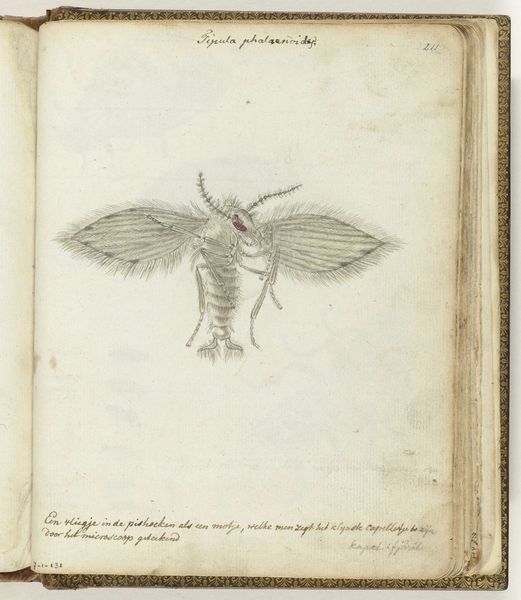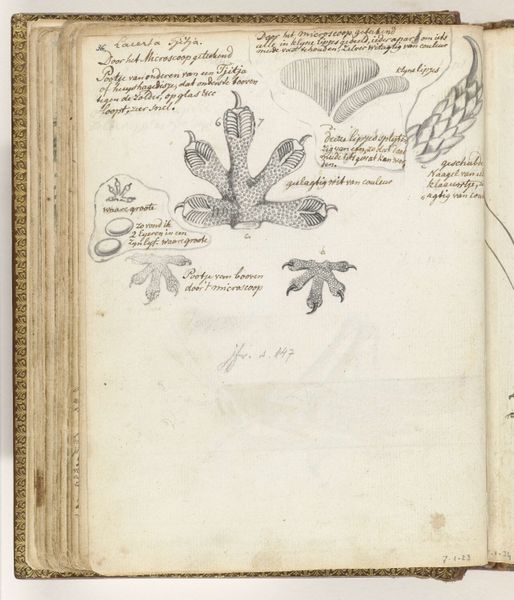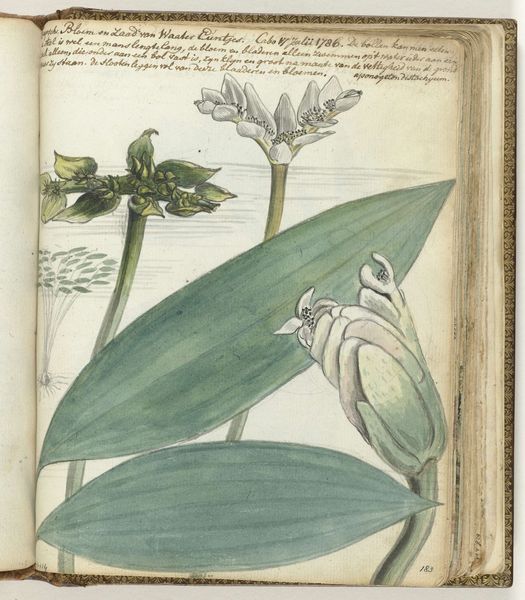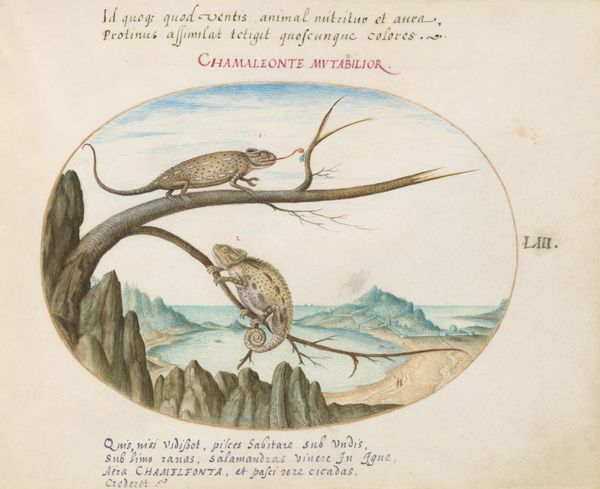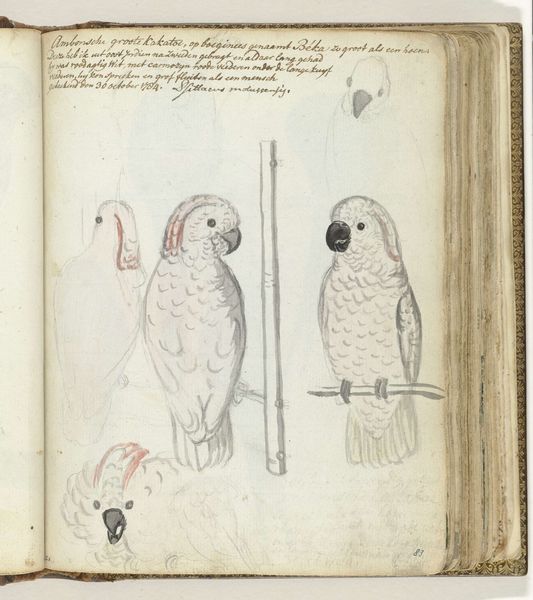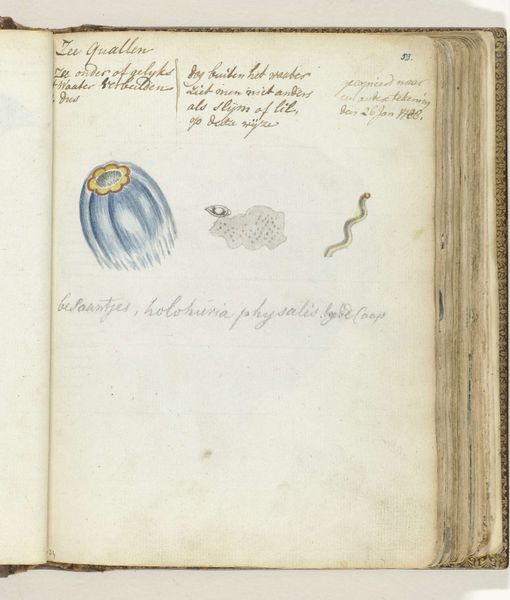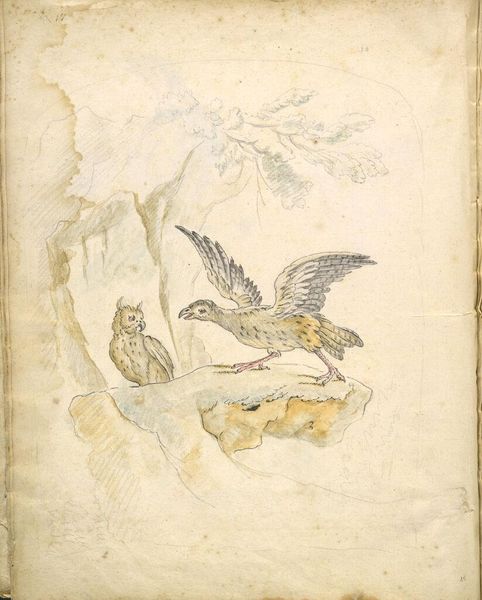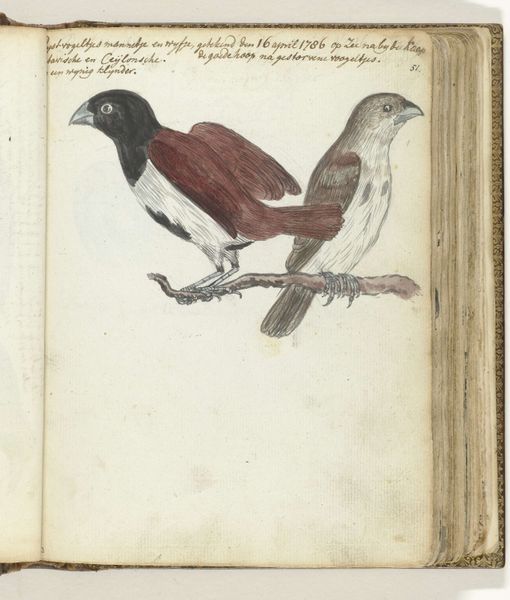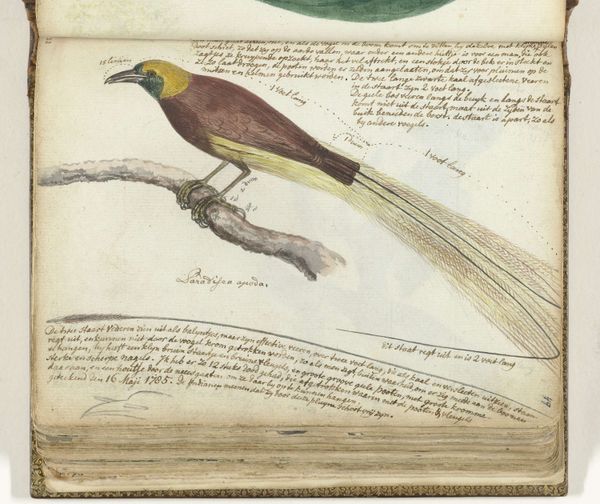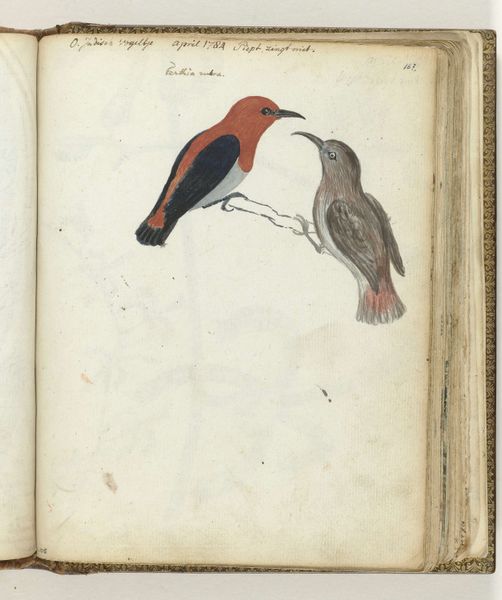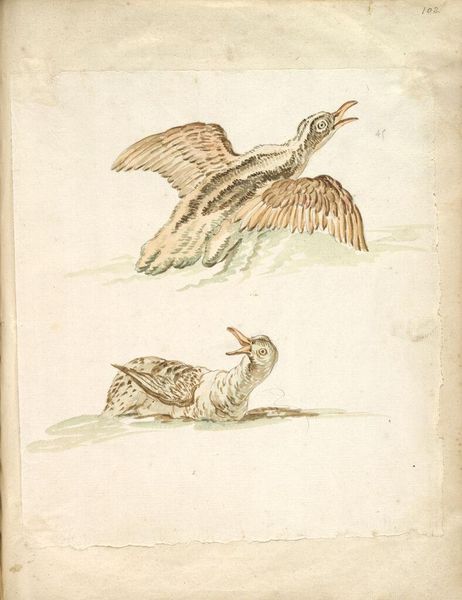
drawing, coloured-pencil, ink
#
drawing
#
coloured-pencil
#
dutch-golden-age
#
ink
#
coloured pencil
#
naturalism
Dimensions: height 195 mm, width 155 mm
Copyright: Rijks Museum: Open Domain
Curator: This drawing, “Javaanse hommel” by Jan Brandes, likely made between 1784 and 1787, offers an intimate glimpse into the life cycle of a carpenter bee. It’s rendered in ink and coloured pencil, creating a sense of immediacy and scientific observation. Editor: Yes, I find it quite fascinating to look at. It reminds me of illustrations from old biology textbooks, with a mix of scientific accuracy and almost an artistic approach. How do you interpret this work? Curator: I see it as a fascinating intersection of colonial exploration, scientific inquiry, and artistic representation. Brandes, working within the context of Dutch colonialism in Java, documents local fauna, reflecting the era's impulse to classify and understand the natural world through a European lens. How does the drawing speak to that colonial project to you? Editor: Well, you can see the detached, objective viewpoint, as if the bee is merely a specimen under observation, devoid of its natural environment. The careful annotations, while informative, also underscore a power dynamic, framing the local knowledge within a European scientific structure. Curator: Exactly. And notice how the artist focuses on the bee's biology. It’s presented without engaging its place within a larger Javanese ecological context. What is included focuses on a life cycle of resource extraction: note how the artist details what kind of tree the bee makes its home in! Editor: It definitely gives me a different perspective to think about it this way – from the standpoint of a much larger network of socioeconomic extraction from the island's resources and materials. It encourages us to consider not just the what, but the who, how, and why. Thanks! Curator: Precisely. Thinking about the power dynamics inherent in scientific illustration during the colonial era encourages us to question whose perspectives are privileged and whose are marginalized, allowing for a more critically engaged viewing experience.
Comments
No comments
Be the first to comment and join the conversation on the ultimate creative platform.
